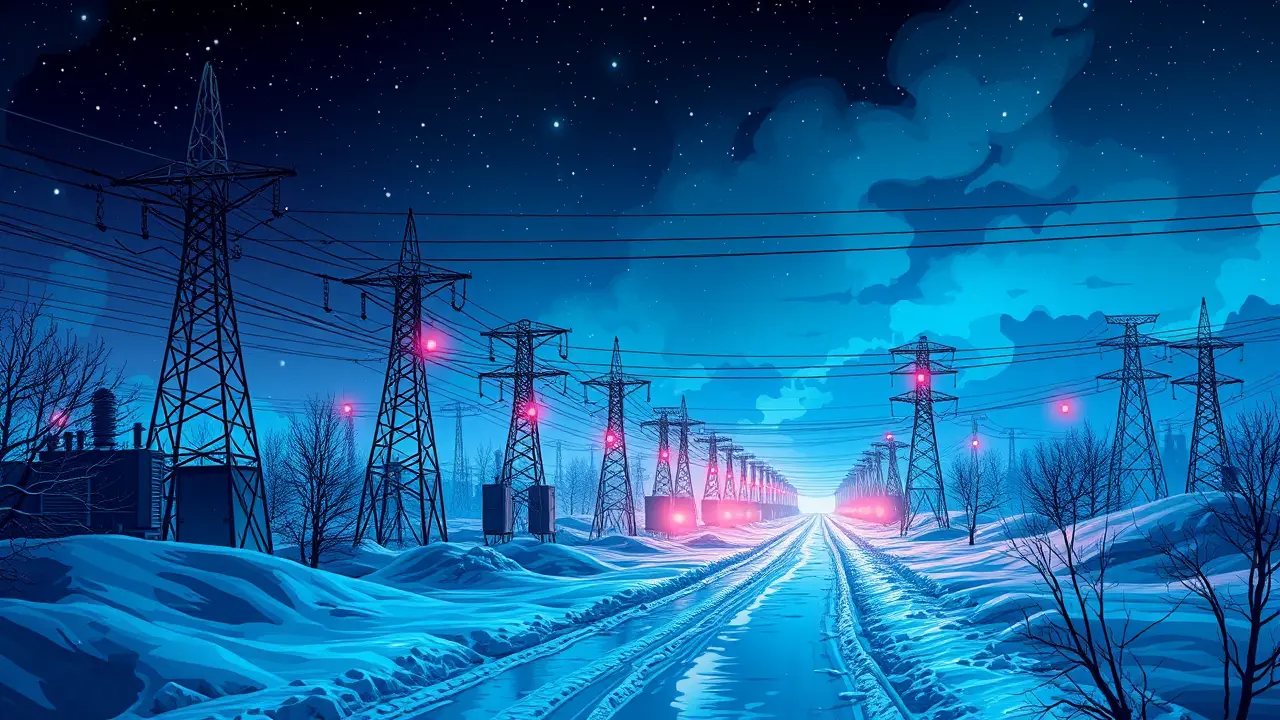Ukraine Imposes Blackouts After Russian Attacks on Power Grid
The imposition of rolling blackouts across Ukraine marks a grimly predictable escalation in Russia's systematic campaign to weaponize winter, a strategic pivot that analysts have tracked with growing alarm since the initial February 2022 invasion. This will be the fourth consecutive winter where sub-zero temperatures become a tactical ally for the Kremlin, a calculated move to break civilian morale and cripple industrial output by targeting the very backbone of modern society: the energy grid.The recent attacks, far more sophisticated and devastating than the initial salvos, have evolved from targeting substations to employing advanced drones and missiles capable of causing catastrophic, long-term damage to generation facilities, a clear signal that Moscow is playing a long, attritional game. We've seen this playbook before, not in its modern technological execution, but in its strategic intent—the siege tactics of Leningrad aimed to achieve through starvation what these blackouts aim to accomplish through freezing darkness, a brutal test of national resilience.The immediate consequence is a humanitarian crisis, with millions facing life without heat, light, and running water, but the secondary and tertiary effects are what risk analysts are now modeling. The strain on neighboring EU power grids, already tested by previous refugee flows, could trigger a cascade of energy insecurity, pushing electricity prices upward and testing the political solidarity that has thus far underpinned European support.Furthermore, the degradation of Ukraine's industrial capacity prolongs its economic dependency on Western aid, creating a feedback loop where military support is insufficient without parallel massive investment in energy infrastructure, a sector now perpetually in the crosshairs. Experts from the Center for Strategic and International Studies point to a worrying precedent: the reconstruction costs for the energy sector are now estimated in the tens of billions, a figure that grows with each new targeted strike, potentially dwarfing the funds allocated for military assistance and creating a post-war recovery challenge of monumental proportions.From a risk-assessment perspective, the scenario planning must now include the possibility of a complete grid collapse during a peak winter event, which would not only precipitate a massive internal displacement crisis but also force NATO members into a direct humanitarian intervention under conditions of extreme duress. The Kremlin’s calculus appears to be that the cumulative pressure of four winters of darkness will eventually fracture the political will in Kyiv and its Western backers, a high-stakes gamble that the Ukrainian spirit, though famously resilient, has its breaking point. This is no longer merely a military conflict fought on frontlines with tanks and artillery; it is a hybrid war being waged in power control rooms and transformer stations, where the ultimate objective is to plunge a nation into the cold and hope that the darkness does what the army could not.
Latest News
The charts are whispering what the true believers have felt in their bones for weeks—Dogecoin is carving out a bottom.
17 hours ago5 comments
The Institute for Fiscal Studies has thrown a stark warning onto Rachel Reeves's desk, urging the Chancellor to confront a potential £22 billion shortfall in
17 hours ago3 comments
Alright, let's break down this absolute heater of a performance from the Chicago Blackhawks, because if you missed this one, you missed a party.
17 hours ago5 comments
The ice was hot last night in the NHL, folks, serving up a slate of games that felt less like a regular season Tuesday and more like a playoff preview with a
18 hours ago3 comments
The XRP chart is painting a tantalizing picture for those with the stomach to withstand the relentless pressure from crypto's leviathans.
18 hours ago4 comments
It’s in the small shifts, the quiet recalibrations of a Thursday morning, where the most meaningful change often takes root.
18 hours ago4 comments
In a move that sent ripples of quiet confidence through the crypto ecosystem, blockchain intelligence firms tracked a monumental treasury allocation from
18 hours ago4 comments
In a move that would have drawn a nod of approval from historical figures like Churchill, who understood the delicate balance of power within democratic
18 hours ago2 comments
BR
Brandon Miller123k8 hours ago
wait so are they bombing power plants or something i'm so confused smh
0
JA
Jamie Larson123k9 hours ago
this is just so bleak man, feels like they're trying to break a whole country's spirit idk how much more people can take
0
JA
Jamie Wilson123k9 hours ago
this is so grim but honestly the ukrainian spirit has been incredible, they keep finding ways to push through
0
JA
Jamie Larson123k19 hours ago
this is so grim tbh i can't even imagine dealing with a fourth winter like that, how is the power grid even still functioning smh
0
MA
Maya Chen123k20 hours ago
this is just so grimly predictable smh weaponizing winter feels like something from a dystopian novel but here we are
0
JA
Jamie Larson123k20 hours ago
this is just so grim to read every winter like we're just watching it happen again smh
0
JA
Jamie Larson123k24 hours ago
ugh weaponizing winter is just so cruel idk how people endure this for a fourth year, it's just heartbreaking
0
